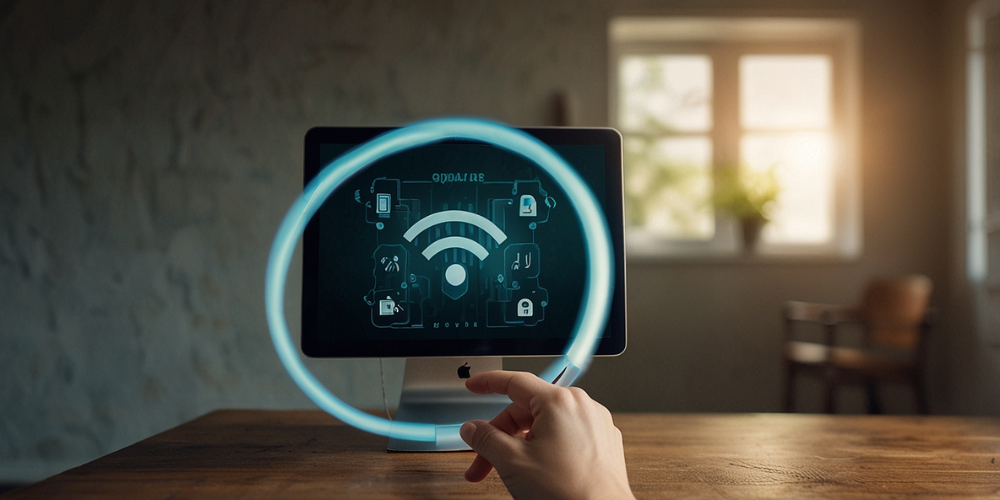Setting Up a Secure Home Wi-Fi Network
Sep-21-2024

Setting up my home Wi-Fi network was one of the first things I tackled when I moved into my new place. With all the devices connected to the internet today, ensuring my network was secure felt like a significant priority. I understood that a strong Wi-Fi connection isn’t just about streaming my favorite shows; it’s about protecting my personal information and digital privacy. I wanted to create a network that I could trust.
Choosing the Right Equipment
The first step I took was selecting the right router for my needs. I researched various brands and models to find one compatible with my internet provider. My ultimate goal was to choose a router that offered robust security features. After some reviews and recommendations, I decided on a dual-band router, allowing me to use both 2.4 GHz and 5 GHz bands for better coverage and speed.
Location, Location, Location
Once I had the router, I needed to find the perfect spot to place it. I learned that the location significantly affects the Wi-Fi signal strength throughout my home. I placed the router in a central location, elevated it on a shelf, and ensured there were minimal obstructions like walls or large furniture blocking the signal. This took some trial and error, but eventually, I found the optimal placement.
Accessing the Router Setup Page
With everything physically set up, it was time to access the router's configuration page. Using my computer, I connected to the available network and entered the default IP address given in the router's manual. I knew that changing default settings was crucial to enhancing security. I found it easy to log in using the default username and password but immediately changed them afterward.

Changing Default Credentials
One of the first things I did was change the default username and password. I understood that many users forget this critical step, making their networks vulnerable. I chose a strong, unique password that included a combination of letters, numbers, and special characters. This would become my first line of defense against unauthorized access.
Enabling WPA3 Encryption
My next step was enabling WPA3 encryption on my router. I discovered that WPA3 provides a stronger layer of security compared to its predecessors. It not only secures my network but also protects the data being sent over it, making it incredibly difficult for attackers to intercept. I was pleased to know that I was implementing the latest standard for wireless security.
Creating a Strong Wi-Fi Password
Next, I focused on creating a strong Wi-Fi password. I didn’t want just any password; I wanted one that was complex enough to deter would-be intruders. I opted for a long passphrase that was easy for me to remember but difficult for others to guess. This included elements that were personal to me, making it even more secure.
Disabling WPS
As I navigated through the router settings, I noticed an option for Wi-Fi Protected Setup (WPS). I learned that while WPS might seem convenient for quickly connecting devices, it can also introduce vulnerabilities. So, I decided to disable it altogether, opting instead to connect devices manually to minimize risk.

Updating Router Firmware
I then made sure to check for the latest firmware updates for my router. I learned that router manufacturers often release updates to fix security vulnerabilities. I found the firmware section in the settings and initiated the update. This simple step significantly enhanced my network security by patching any potential weaknesses.
Implementing a Guest Network
Knowing that friends and family often visit, I thought it would be prudent to set up a guest network. This way, I could allow visitors to connect to the internet without compromising my main network. I went into the settings and easily set up a separate guest network with its own password. This ensured that my personal devices remained secure while still providing Wi-Fi for guests.
Using a VPN for Added Privacy
I also discovered the benefits of using a Virtual Private Network (VPN) for added privacy. I researched different VPN services and chose one that suited my needs. By connecting to a VPN, my online activity would be encrypted, making it harder for anyone to intercept my data, even when I used public Wi-Fi.
Regularly Monitoring Connected Devices
After everything was set up, I made it a habit to monitor the devices connected to my network. I appreciated that most routers provided a list of all connected devices, and I checked this list periodically. Whenever I noticed an unknown device, I took immediate action to either remove it or change my password, ensuring my network remained secure.

Setting Up Network Monitoring Alerts
To take my security a step further, I set up notifications for any new device connections. This feature allowed me to receive alerts anytime a new device tried to connect, prompting me to check if I recognized it. Knowing that I could react quickly to any suspicious activities put my mind at ease.
Educating Household Members
I realized that security didn’t just fall on my shoulders; everyone using the network needed to be informed. I held a small family meeting to discuss password protection, the risks of phishing, and best practices for Wi-Fi security. Ensuring everyone was educated and vigilant helped fortify my network and created a culture of security awareness in my home.
Regular Security Audits
Finally, I committed to performing regular security audits. I scheduled monthly check-ins to review all configurations, device connections, and updates. Staying proactive rather than reactive was essential in this digital age. Periodic audits ensured that my network remained secure against evolving threats.
Closing Thoughts
Creating a secure home Wi-Fi network was a journey that involved several steps and an ongoing commitment to awareness and vigilance. I took various measures, from selecting the right equipment to educating those around me. By implementing these strategies, I felt confident in my network's security, knowing I had done my best to protect my digital space.







